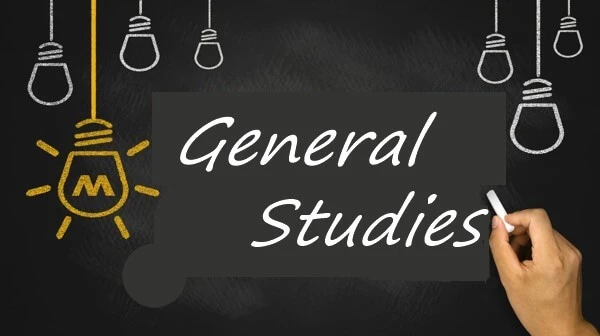Intermolecular Forces Books
Organic Chemistry, 6th edition
Author: Janice Gorzynski Smith
School: Edo University
Department: Science and Technology
Course Code: CHM123
Topics: Organic Chemistry, periodic table, bonding, Lewis structures, isomers, octet rule, hybridization, ethane, ethylene, acetylene, bond length, bond strength, Electronegativity, Bond Polarity, oxybenzone, Brønsted–Lowry Acids, Brønsted–Lowry Bases, acid strength, Aspirin, organic molecules, functional groups, intermolecular forces, alkanes, cycloalkanes, Substituted Cycloalkanes, lipids, Stereochemistry, starch, cellulose, glass chemistry, chiral molecules, achiral molecules, Disastereomers, meso compounds, Disubstituted Cycloalkanes, isomers, Enantiomers, organic reactions, bond breaking, bond making, Bond Dissociation Energy, thermodynamics, Enthalpy, Entropy, energy diagrams, kinetics, catalysts, enzymes, Alkyl Halides, Nucleophilic Substitution, Polar Carbon–Halogen Bond, nucleophile, Carbocation Stability, Hammond postulate, Biological Nucleophilic Substitution, Vinyl Halides, Aryl Halides, Organic Synthesis, elimination reactions, Alcohols, Ethers, Carbocation Rearrangements, Tosylate, Thials, sulfides, Alkenes, Addition Reactions, Hydrohalogenation, Lipids, Markovnikov's Rule, Halohydrin Formation, Epoxidation, alkenes, mass spectrometry, infrared spectroscopy, electromagnetic radiations, Nuclear Magnetic Resonance Spectroscopy, Magnetic Resonance Imaging, radical reactions, Conjugated Dienes, Electron Delocalization, Diels–Alder Reaction, Benzene, Aromatic Compounds, Benzene's Unusual Stability, Buckminsterfullerene, Electrophilic Aromatic Substitution, Friedel–Crafts Alkylation, Friedel–Crafts Acylation, Nucleophilic Aromatic Substitution, Carbonyl Chemistry, Organometallic Reagents, Aldehydes, Keton, Nucleophilic Addition, Carboxylic Acids, Nitriles, Aspirin, Arachidonic Acid, Prostaglandins, enols
Chemistry - Study and Revision Guide
Author: Christopher Talbot, Richard Harwood
School: Federal University of Agriculture, Abeokuta
Department: Science and Technology
Course Code: CHM101
Topics: stoichiometry, mole concept, gases, reacting mass, reacting volume, atomic structure, nuclear atom, electron configuration, periodicity, periodic table, periodic trends, chemical bonding, chemical structure, ionic bonding, ionic structure, covalent bonding, covalent structures, intermolecular forces, metallic bonding, thermochemistry, Hess's law, bond enthalpies, chemical kinetics, collision theory, rate of reaction, equilibrium, acid, base, pH scale, strong acid, strong base, acid deposition, redox process, oxidation, reduction redox processes.electrochemical cells, organic chemistry, functional group chemistry, periodic table, transition metals, chemical bonding, chemical structure, hybridization, energy cycles, entropy, spontaneity, reaction mechanis, .activation energy, Lewis acid, Lewis base, organic chemistry
Author: Theodore Brown, Eugene LeMay, Bruce Bursten, Catherine Murphy, Patrick Woodward, Matthew Stoltzfus
School: Federal University of Agriculture, Abeokuta
Department: Science and Technology
Course Code: CHM101
Topics: matter, energy, atom, molecule, ion, chemical reaction, Reaction Stoichiometry, thermochemistry, electronic structure, chemical bonding, molecular geometry, bonding theorues, gases, liquid intermolecular forces, solids, solutions, chemical kinetics, Chemical Equilibrium, Acid–Base Equilibria, Aqueous Equilibria, chemical thermodynamics, electrochemistry, nuclea chemistry, transition metals, coordination chemistry, organic chemistry, biological chemistry, chemistry of life
Chemistry, 10th Edition Student Solutions Manual
Author: Raymond Chang, Kenneth Goldsby
School: University of Ibadan
Department: Science and Technology
Course Code: CHE127, CHE157, CHE177, CHE257, CHE327, CHE428
Topics: Atom, molecule, ion, chemical reaction, Gas, thermochemistry, quantum theory, chemical bonding, intermolecular forces, chemical kinetics, chemical equilibrium, acid, base, Acid-base equilibria, solubility equilibria, entropy, free energy, equilibrium, electrochemistry, Nuclear chemistry, Metallurgy, Transition metal, organic chemistry, polymer
Solution to Exercise Chemistry the central science ,12th edition
Author: Roxy Wilson
School: Federal University of Agriculture, Abeokuta
Department: Science and Technology
Course Code: CHM101
Topics: matter, energy, atom, molecule, ion, chemical reaction, Reaction Stoichiometry, thermochemistry, electronic structure, chemical bonding, molecular geometry, bonding theories, gases, liquid intermolecular forces, solids, solutions, chemical kinetics, Chemical Equilibrium, Acid–Base Equilibria, Aqueous Equilibria, chemical thermodynamics, electrochemistry, nuclea chemistry, transition metals, coordination chemistry, organic chemistry, biological chemistry, chemistry of life
Author: Raymond Chang, Kenneth Goldsby
School: University of Ibadan
Department: Science and Technology
Course Code: CHE127, CHE157, CHE177, CHE257, CHE327, CHE428
Topics: Atom, molecule, ion, chemical reaction, Gas, thermochemistry, quantum theory, chemical bonding, intermolecular forces, chemical kinetics, chemical equilibrium, acid, base, Acid-base equilibria, solubility equilibria, entropy, free energy, equilibrium, electrochemistry, Nuclear chemistry, Metallurgy, Transition metal, organic chemistry, polymer
Author: Robert thornton morrison, Robert Neilson Boyd
School: University of Ibadan
Department: Science and Technology
Course Code: CHE276
Topics: Organic Chemistry, chemical bond, quantum mechanics, atomic orbitals, electronic configuration, Pauli exclusion principle, molecular orbitals, covalent bond, hybrid orbitals, intramolecular forces, bond dissociation energy, homolysis, heterolysis, bonds polarity, melting point, intermolecular force, boiling point, solubility, acids, bases, isomerism, activation energy, hydrocarbons, methane structure, oxidation, heat of combustion, chlorination control, relative reactivity, reaction mechanisms, chlorination, free radicals, chain reactions inhibitors, transition state, molecular formula, chlorofluorocarbons, qualitative elemental analysis, quantitative elemental analysis, Alkene, free-radical substitution, ethane structure, Higher alkanes, alkyl groups, industrial source, Grignard reagent, halogenation, free radical stability, combustion, greenhouse effect, pyrolysis, cracking, alkane analysis, stereochemistry, stereoisomers, isomer number, tetrahedral carbon, optical activity, plane-polarized light, polarimeter, specific rotation, enantiomerism, chirality, chiral center, enantiomers, racemic modification, Diastereomers, meso structures, conformational isomers, optical purity, Alkyl halides, Nucleophilic aliphatic substitution, homolytic chemistry, heterolytic chemistry, Carbocations, Carbocations structure, alkyl halides analysis, alcohols, ethers, alcohol nomenclature, carbohydrates fermentation, Ethanol, alcohol preparation, alcohol reaction, alcohol oxidation, ethers preparation, Secondary Bonding, carbon-carbon double bond, Unsaturated hydrocarbon, ethylene structure, Propylene, Hybridization, orbital size, butylene, Geometric isomerism, alcohol dehydration, alkene reaction, hydrogen bromide addition, Hydrogenation, Electrophilic addition, Oxymercuration-demercuration, Hydroboration-oxidation, Alkene Free-radical polymerization, allylic Nucleophilic substitution, dienes, isoprene, isoprene rule, acetylene, Cyclic Aliphatic Compounds, cyclic compound stereoisomerism, cyclic ether, crown ethers, aromaticity, Benzene, aliphatic compounds, aromatic compounds, benzene structure, Kekule structure, Benzene ring, aromatic character, polynuclear aromatic hydrocarbons, Naphthalene, Quantitative elemental analysis, Electrophilic Aromatic Substitution, Friedel-Crafts alkylation mechanism, naphthalene electrophilic substitution, Aromatic-Aliphatic Compounds, Arenes, Spectroscopy, mass spectrum, electromagnetic spectrum, nuclear magnetic resonance spectrum, coupling consonants, chemical shift, aldehydes, ketones, Cannizaro reaction, Grignard reagents addition, Tetrahydropyranyl ethers, Iodoform test, Carboxylic Acids, Grignard synthesis, Dicarboxylic acids, acid chlorides, acid anhydrides, amides, esters, Transesterification, Aldol condensation, Wittig reaction, Crossed Claisen condensation, halides, ammonolysis, amide Hofmann degradation, Heterocyclic amines
Chemistry The Molecular Nature of Matter and Change ,9th edition
Author: Martin Silberberg, Patricia Amateis
School: University of Nigeria, Nsukka
Department: Science and Technology
Course Code: CHM112
Topics: Chemistry, matter, Stoichiometry, Chemical Reactions, Kinetic-Molecular Theory, Thermochemistry, Quantum Theory, Atomic Structure, Electron Configuration, Chemical Periodicity, chemical bonding, Shapes of Molecules, covalent bonding, Intermolecular Forces, Periodic Patterns, Organic Compounds, carbon, chemical reactions, chemical kinetics, chemical equilibrium, Acid-Base Equilibria, Ionic Equilibria, Thermodynamics, Entropy, Free Energy, Reaction Direction, Electrochemistry, Chemical Change, Electrical Work, Transition Elements, nuclear reactions
Principles of General Chemistry ,3rd edition
Author: Martin Silberberg
School: University of Nigeria, Nsukka
Department: Science and Technology
Course Code: CHM101, CHM112, CHM122
Topics: matter, chemical reactions, gases, Kinetic Molecular Theory, Thermochemistry, Energy Flow, Chemical Change, Quantum Theory, Atomic Structure, Electron Configuration, Chemical Periodicity, Chemical Bonding, Shapes of Molecules.Covalent Bonding, Intermolecular Forces, Periodic Patterns, solutions, Organic Compounds, carbon, Mechanisms of Chemical Reactions, Acid-Base Equilibria, Ionic Equilibria, Thermodynamics, Entropy, Free Energy, Electrochemistry, Chemical Change, Electrical Work, Transition Element, Nuclear Reactions
Student Solutions Manual to accompany Principles of General Chemistry
Author: Martin Silberberg, Patricia Amateis
School: University of Nigeria, Nsukka
Department: Science and Technology
Course Code: CHM101, CHM112, CHM122
Topics: matter, chemical reactions, gases, Kinetic Molecular Theory, Thermochemistry, Energy Flow, Chemical Change, Quantum Theory, Atomic Structure, Electron Configuration, Chemical Periodicity, Chemical Bonding, Shapes of Molecules.Covalent Bonding, Intermolecular Forces, Periodic Patterns, solutions, Organic Compounds, carbon, Mechanisms of Chemical Reactions, Acid-Base Equilibria, Ionic Equilibria, Thermodynamics, Entropy, Free Energy, Electrochemistry, Chemical Change, Electrical Work, Transition Element, Nuclear Reactions
Departments

Administration, Social and Management science

Agriculture and Veterinary Medicine

Arts and Humanities

Education

Engineering

General studies

Law

Medical, Pharmaceutical and Health science

Science and Technology